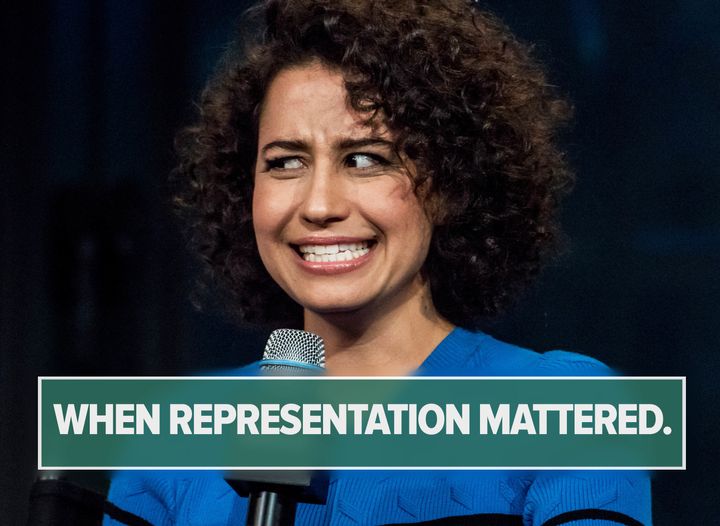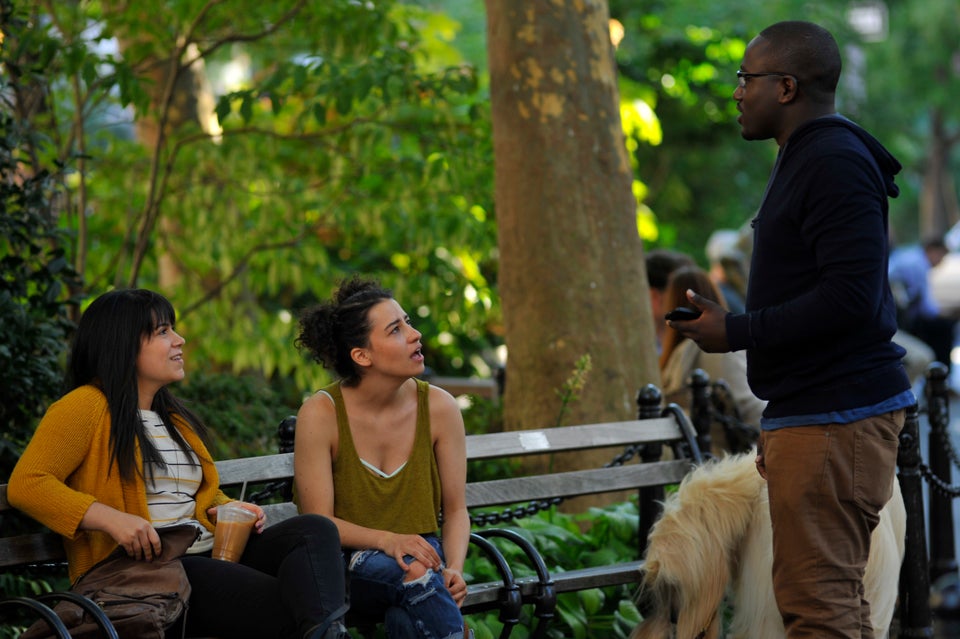
Straight people are strange and confusing to me. So are lesbians. I feel this way because I am neither, because the idea of not being attracted to all genders and gender identities perplexes me more than anything on this planet.
Like lots of little girls, I played with dolls when I was young. I imagined those dolls as husbands and wives and mommies and daddies. But I was also totally, totally queer. When I was 4 years old, for example, I’d get home from kindergarten and ask my mother to please put on a movie for me. Some days I would ask for Aladdin. Some days I would ask for Cinderella. Often, though, the “movie” I wanted was actually a Janet Jones workout tape. Before I knew what sexual attraction was, I knew I really liked watching women do jumping jacks in their swimsuits. Sue me.
I had no romantic relationships growing up ― just dramatic crushes. I didn’t know how to talk about the things I didn’t have the words for yet ― bisexuality wasn’t something I even thought was real, and pansexuality hadn’t even entered the lexicon of sexual orientations. The warmth at the bottom of my stomach when I had crushes on girls and the sickness just beside it when I knew I couldn’t tell anyone about those crushes were regular occurrences. I was basically nauseous from the age of 10 until I graduated from college.
I was an outspoken LGTB “ally.” I marched in protests, I helped start the Gay Straight Alliance at my then-hugely conservative high school. And graduating from high school in Sacramento in 2008 meant plenty of opportunities to protest at the capital and pluck my neighbors’ “Yes on Prop 8” signs from their lawns in the middle of the night. And yet I never actually came out. I didn’t think I had anything to come out with.
In college I had my first real crush ― not a Janet Jones crush but something akin to falling in love ― on another bi woman with whom I waitressed at a bowling alley. She had long black hair that waved all the way down her back and two dark almond eyes. Our experience together prompted a small series of confessions to my friends rather than a grand “coming out” gesture.
Later that year, I moved to London and grew more and more comfortable being an active part of the LGBT community rather than just supporting it from the outside. Aside from pride rallies, I started going to “Ladies Nights” at gay bars and not just making room for myself in the community, but forcing myself to acknowledge that I deserved a place in it.
And yet. As with many bi women, there’s the fear that you’re not really part of the LGBT community ― this fear kept me tight-lipped about my identity throughout my college years and into my early twenties. I chocked up my feelings and experiences with women to “experimenting,” which is healthy and great and good, but also inaccurate. I wasn’t experimenting anymore. I just was.
And then I saw “Broad City,” and everything changed.
When I sat down to write this essay I tried to recall the moment that Ilana Glazer’s character, also Ilana, came out or made an announcement about her sexuality. The beauty, of course, is that she never does. She never has to. She just is.
Representation of queer women in pop culture has, over time, gotten somewhat better. Shows like “The L Word” and “The Real L Word” put the lesbian experience into the mainstream ― but that doesn’t do much for bi or pansexual women. “Orange is the New Black” and “Once Upon A Time” are favorites among the queer community for unflinching depictions of queer women in love and lust. But even though representation is entering the mainstream, queer women are also being killed off all too frequently ― and many, many obviously queer women’s narratives have been nauseatingly straight-washed (think Xena and Gabrielle, best friends Idgie Threadgoode and Ruth Jamison from “Fried Green Tomatoes,” Delta Airlines removing any same-sex kissing in “Carol”).
But with “Broad City” there’s no straight-washing. Girl-on-girl sex scenes come unannounced, without warning, and without being a big deal ― just like the straight ones. Ilana’s BFF Abbi never bats an eye at her best friend’s same-sex escapades. In watching “Broad City” I can contentedly watch a 20-something bi woman be herself, without apology.
What bi or pansexual women get with Ilana Wexler is something we don’t get in exclusively hetero or lesbian narratives: representation of an experience that often defies labels or categories. Ilana has become my community. Ilana told me I’m a “kween” no matter who I’m kissing. Ilana gave me the balls to be a little more out and a lot less apologetic.
Ilana gave me a self-acceptance I hadn’t given myself permission to have, and helped me to see the absolute beauty in my identity: when you’re a bi or pansexual woman, the entire world becomes your community, if you let it.
This essay is part of the HuffPost Voices series “When Representation Mattered.” The series highlights stories from people of all racial backgrounds, religions, abilities, ages, sexual and gender identities on what representation means to them. To submit your story (in written or vlog form) for consideration, email representationmatters@huffingtonpost.com.
Past blogs in the series:

